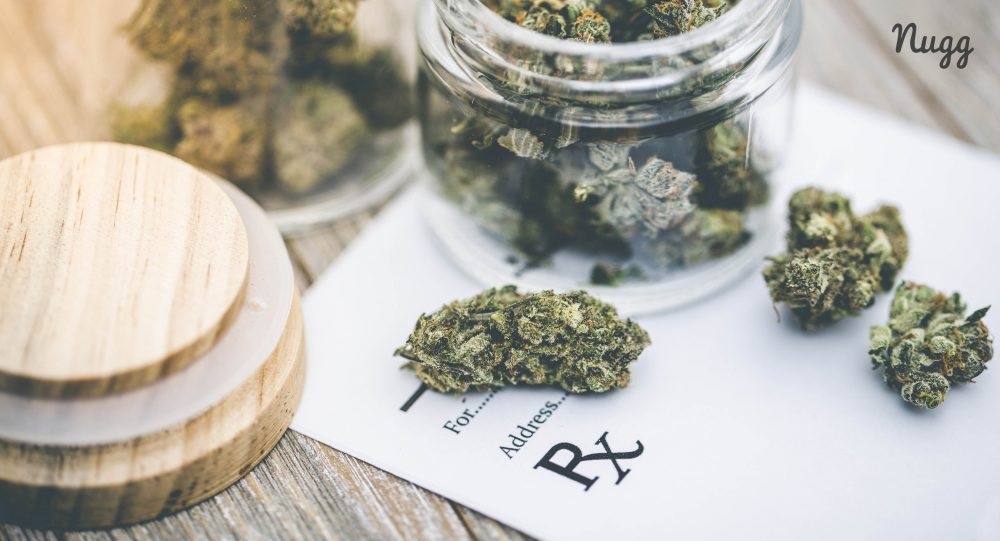
Lymphoma is a group of cancers affecting the lymphatic system, which is the network of organs and tissues used to fight disease in the body.
There are two primary types of lymphoma we will focus on include:
- Hodgkin lymphoma,
- Non-Hodgkin lymphoma.
They are ultimately differentiated by how they spread - Hodgkin lymphoma spreads in an orderly fashion, whereas Non-Hodgkin does not.
Both kinds of lymphoma can affect both children and adults.
Non-Hodgkin lymphoma is one of the most common kinds of cancer in the United States, accounting for approximately 4% of all cancer cases and 3.3% of cancer deaths. Hodgkin Lymphoma, however, accounts for about 0.5% of all cancer cases and 0.1% of cancer deaths. In addition, both Hodgkin and Non-Hodgkin lymphoma are some of the most prevalent cancers affecting children, accounting for 3% and 5% of diagnoses, respectively.
Lymphoma has likely affected humans for most of our history. However, it was in the early 1800s that it was first studied and described. Thomas Hodgkin, a British physician, was the first to publish research in 1832 on the type of lymphoma that now shares his name.
Since then, many other forms of this cancer have been discovered.
What Causes Lymphoma?
Unfortunately, the causes of lymphoma are not entirely understood for sure. However, many factors indicate a higher risk of developing these cancers.
Studies have shown a potential link between contracting HIV and later developing lymphoma.
Similar connections have been found for other viruses. For example, those that have suffered from the Epstein-Barr virus and the human T-cell lymphotropic virus seem to have a higher risk of developing lymphoma following their viral infections.
Other environmental factors also increase the risk of developing lymphomas, such as exposure to ionizing radiation or certain pesticides and herbicides.
While lymphoma can affect children and adults, over half of patients diagnosed with Non-Hodgkin lymphoma are over 65. Hodgkin lymphoma, on the other hand, is much more common in teenagers aged 15 to 19.
Lymphoma Signs & Symptoms
Like many other forms of cancer, lymphoma may cause various symptoms. Nevertheless, the primary sign and symptom of lymphoma are swollen lymph nodes. These nodes are located throughout the body, including the chest, armpit, groin, neck, and abdomen.
In most cases, these swollen lymph nodes will not cause pain, making it sometimes difficult for the patient to detect.
Lymphoma can also cause other symptoms, especially as cancer growth progresses.
For example, lymphoma patients may experience the following:
- Fever,
- Weight Loss,
- Night sweats,
- Fatigue & malaise,
- Shortness of breath,
- Stomach and abdominal pain.
Can Cannabis Help Alleviate Lymphoma Symptoms?

According to surveys, cannabis use is pretty common in lymphoma patients.1
Chemotherapy is one of the primary treatments for most types of cancer, and while it can be very effective, chemotherapy is notorious for its unpleasant side effects, such as hair loss, vomiting, nausea, and loss of appetite.
Of course, cannabis may directly help with many of these side effects. For instance, studies have long shown that cannabis use can provide relief to feelings of nausea and vomiting.2
In addition, the "munchies," or increased appetite often experienced after using marijuana products, may help cancer patients maintain a healthy weight during their illness and treatment, which can often be challenging for lymphoma patients.
Most importantly, however, research has shown that cannabis may inhibit cancer growth and kill existing cancer cells. For instance, a review conducted in 2020 found that: "cannabinoids display anticancer effects in several models by suppressing the proliferation, migration and/or invasion of cancer cells, as well as tumour angiogenesis."
Finally, lymphoma patients may experience a variety of different pains during their illness and treatments. Cannabis has long been used as a means of pain management and can help alleviate such symptoms for lymphoma patients.3
For example, a study involving Hodgkin's Lymphoma patients found that "cannabis users reported improvement in pain, general well-being, appetite, and nausea in 94, 87, 82, and 79% of cases."4
Legality and Doctor’s Recommendation
To determine if your state considers Lymphoma to be a qualifying condition for medical marijuana, check out our Laws & Regulations section for the medical cannabis rules for your state.
If you find that your state recognizes Lymphoma or its symptoms as a qualifying medical condition, you can seek a doctor’s recommendation to get your medical cannabis card in your state.
How NuggMD Can Help

NuggMD is the nation's leading medical marijuana technology platform, serving patients in 27 states and growing. We’ve connected over 1,000,000 patients with their new medical marijuana doctors face-to-face via our state-of-the-art telemedicine platform.
We believe that every human being has the right to explore the benefits of medical cannabis and are fully committed to helping each patient explore all of their options in their journey to wellness. For further information on whether you qualify for medical cannabis, select your state.
Resources
1. Sarid N, Zada M, Lev-Ran S, et al. Medical Cannabis Use by Hodgkin Lymphoma Patients: Experience of a Single Center. Acta Haematol. 2018;140(4):194-202. doi:10.1159/000493567
2. Stith SS, Li X, Orozco J, et al. The Effectiveness of Common Cannabis Products for Treatment of Nausea. J Clin Gastroenterol. 2022;56(4):331-338. doi:10.1097/MCG.0000000000001534
3. Tomko AM, Whynot EG, Ellis LD, Dupré DJ. Anti-Cancer Potential of Cannabinoids, Terpenes, and Flavonoids Present in Cannabis. Cancers (Basel). 2020;12(7):1985. Published 2020 Jul 21. doi:10.3390/cancers12071985
4. Sarid N, Zada M, Lev-Ran S, et al. Medical Cannabis Use by Hodgkin Lymphoma Patients: Experience of a Single Center. Acta Haematol. 2018;140(4):194-202. doi:10.1159/000493567
5. Deutsch DG. A Personal Retrospective: Elevating Anandamide (AEA) by Targeting Fatty Acid Amide Hydrolase (FAAH) and the Fatty Acid Binding Proteins (FABPs). Frontiers in Pharmacology. 2016;7. doi:https://doi.org/10.3389/fphar.2016.00370
6. Clapper JR, Moreno-Sanz G, Russo R, et al. Anandamide suppresses pain initiation through a peripheral endocannabinoid mechanism. Nat Neurosci. 2010;13(10):1265-1270. doi:10.1038/nn.2632
The information in this article and any included images or charts are for educational purposes only. This information is neither a substitute for, nor does it replace, professional legal advice or medical advice, diagnosis, or treatment. If you have any concerns or questions about laws, regulations, or your health, you should always consult with an attorney, physician or other licensed professional.

